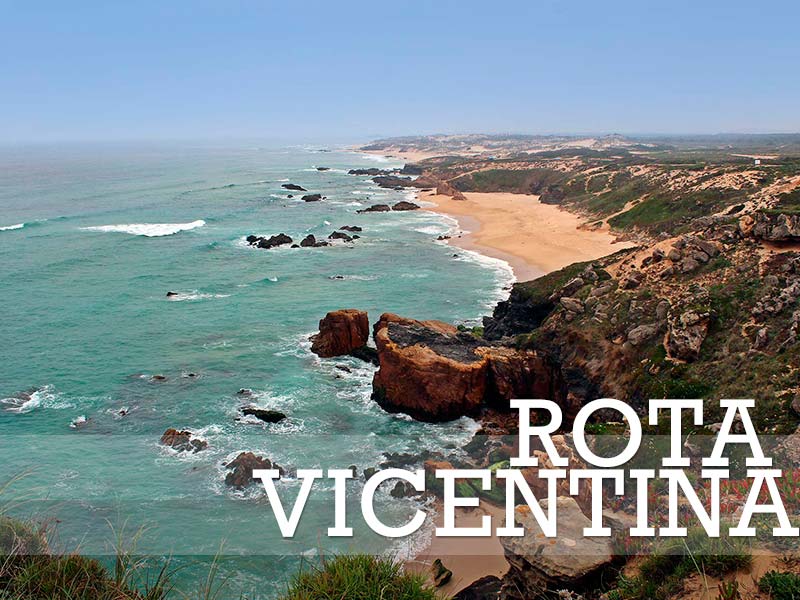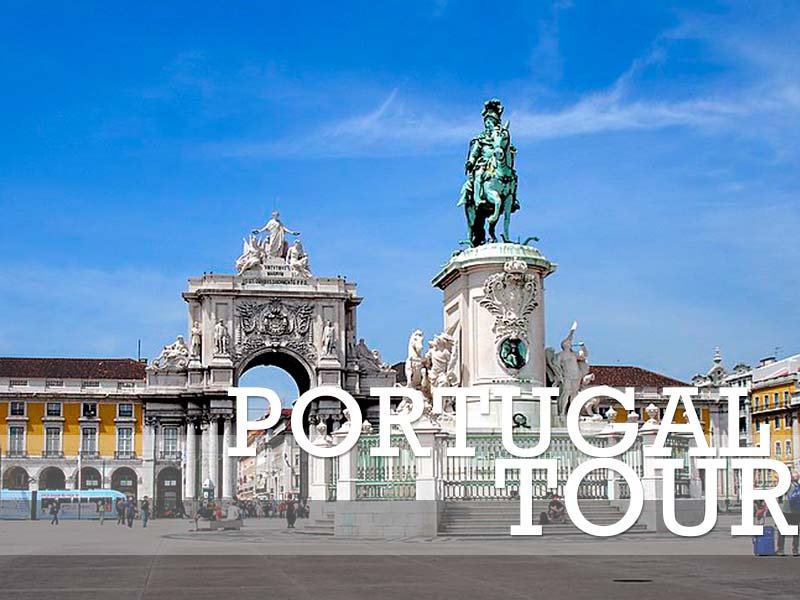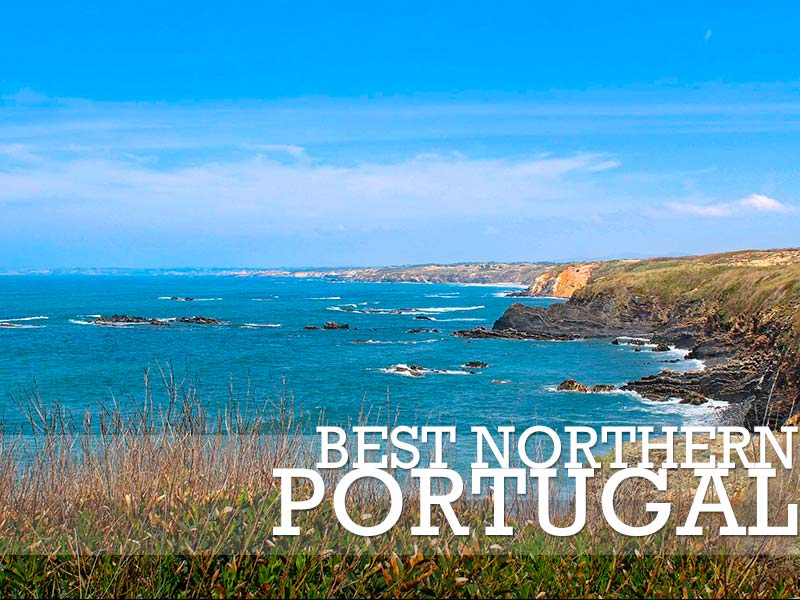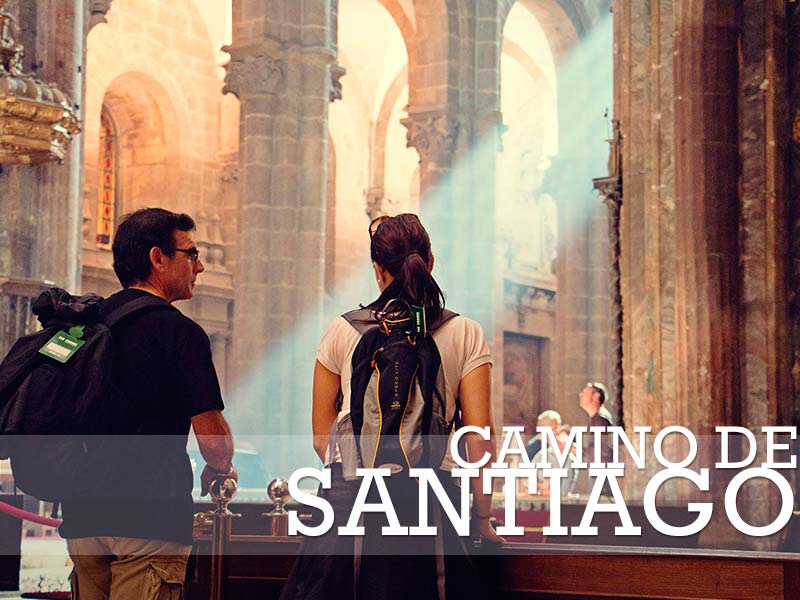PORTUGAL
Portugal takes up most of the Atlantic side of the Iberian Peninsula.
Its condition as a country situated next to the sea has conditioned its history, as interpreted in the poems of Camões in Os Lusíadas (1572), the Portuguese national epic, whose main protagonists are its sailors and their feats.
Continental Portugal corresponds to two provinces of Roman Hispania in the southern area of Gallaecia (between the Rivers Miño and Duero) and almost all of Lusitania. However, the name comes from Portucale (possibly the root of today’s Porto and the neighbouring Gaia), a county which Afonso Henriques, the first king of Portugal, was to proclaim as an independent kingdom in the 12th century. To the north, the city of Guimarães, stores the heart of these origins in its castle. However, we can see the marks of a past that left an impressive legacy all over the country: pre-Roman fortresses, monasteries of incredible grandeur (that of Mafra is a good example), castles, palaces, churches, cathedrals, universities, spas, springs (chafarizes), hotels and gift shops, parks, restaurants, cafeterias, pastry shops, tea rooms, etc. next to a countryside of privileged beauty: natural reserves and forests (Peneda-Gerês, Sintra-Cascais, Serra da Estrela, Luso-Buçaco…), beaches that adorn the coast from the Algarve to Caminha, on the mouth of the Miño, islands (Azores, Madeira)… as well as its rich gastronomy and winegrowing tradition (Porto, vinho Verde), its ancient fiestas and traditions, its genuine intangible heritage; such as its music, where popular and academic traditions, local talent and the fusion of various elements (especially Afro-Brazilian) have produced and produce results.
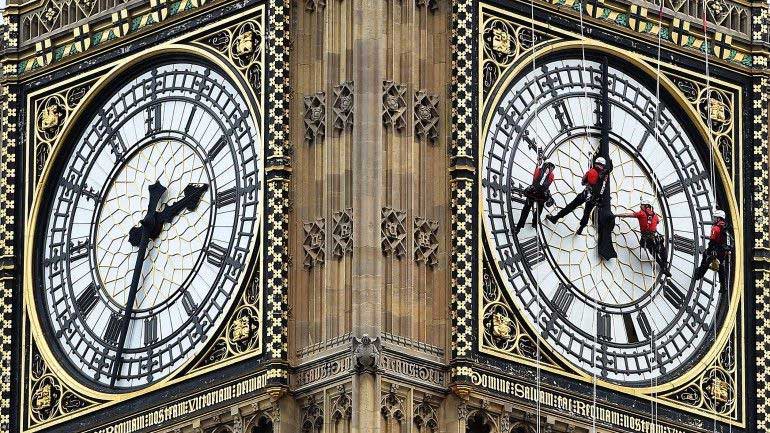
TIME ZONE
Greenwich Mean Time (GMT)
The time zone in Portugal corresponds to Greenwich Mean Time (GMT) plus one hour in summer.
GASTRONOMY
The country’s gastronomy is varied.
Each area of the country has its typical dish, made up of different types of meat (veal, mutton, pork and white meat), different cold meats, fish (especially cod) and shellfish. Its most popular cheeses include Serra da Estrela, Azeitão and São Jorge, among many others.
Portugal is very much a winegrowing country and it is famous for the wines of El Douro, El Alentejo and El Dão, the vinhos verdes of El Minho, and the fortified wines of Oporto and Madeira. It has a wide variety of traditional cake and pastry recipes, such as the famous cakes of Belém, the eggs moll of Aveiro, the cake of Tentúgal, the Sericaia and the sponge cake of Ovar, among many others.
FIESTAS AND
TRADITIONS
Portugal has a long-standing tradition of fairs, fiestas and all kinds of outdoor festivals.
Many of these events are based on religion and are celebrated in honour of one saint or another. Traditional fiestas are very lively. Special mention must be made of the Festas Juninas, which take place in the month of June in honour of the patron saints Juan (Porto), Antonio (Lisbon) and Pedro, celebrated in many towns and villages. The fiestas have incorporated old rites and customs from the pre-Christian period, such as the celebration of the summer solstice, among others. There are also student fiestas, some of which are secular, such as the Festas Nicolinas, celebrated by secondary school students in Guimarães in honour of St Nicolás from 29 November to 7 December. The fiestas known as A Queima das Fitas are celebrated in Coimbra as an old university tradition on 1 May.
CUSTOMS
Lifestyle and Portugal is peaceful, except for the traffic. Generous hospitality is the rule.
Although Portugal is located on the Iberian Peninsula, some of its customs are different from Spain. For example, mealtimes. The Portuguese enjoy a light breakfast at around 08:00, lunch between 12:00 and 14:00, referred to in Portuguese as “almoço”, and dinner between 19:00 and 21:00, called “jantar”. Meals are taken with wine, since the country produces very good quality wine, and they are usually followed by strong black coffee called “bica” or “cimbalino” in the North. As lunch and dinner are taken earlier, shop opening times are also different: 09:00 to 13:00 and 15:00 to 19:00. On Saturdays, opening times are 10:00 to 13:00, but shopping centres open from 10:00 to 23:00.

BEST TOURS IN PORTUGAL
LANGUAGES
Portuguese is the language spoken in Portugal.
The name of the Algarve says much about the mark left on the language by Arabic. The expansion of Portugal’s colonies took Portuguese to other continents, as is the case with other European languages: Africa, America and, to a lesser extent, Asia. Today, the Portuguese-speaking world is made up mainly of Africa, Portugal and Brazil: Angola, Mozambique and Brazil are the main areas in which the Portuguese language is spoken.
Mirandés has also been recently recognised (1990) as an official language, although its use is limited to the municipality of Miranda do Douro and part of Vimioso in the northeast of the country. Originally, Portuguese is strictly Galician-Portuguese, the language of Gallaecia, which would today correspond basically to the Euro-region of Galicia-Northern Portugal. The literary splendour of its mediaeval poetry can be seen in the Gallician-Portuguese anthologies of Ajuda, the National Library and the Vatican. Influenced by the capital, Portuguese was based on the Lisbon model, which, like other Hispanic languages (Catalan, Spanish) incorporated features of Mozarab dialects as it progressed southwards.
CLIMATE
The climate in continental Portugal is Mediterranean, although its proximity to the Atlantic means that it rains more often than in other countries with the same climate, especially in winter.
Continental Portugal.
The Portuguese climate varies significantly from one region to the next and it is influenced by the mountains, latitude and proximity to the sea, which provides mild winters, especially in the Algarve. The climate in continental Portugal is Mediterranean, although its proximity to the Atlantic means that it rains more often than in other countries with the same climate, especially in winter.
In the areas of Porto, Northern Portugal and Beiras, especially near Spain, winters are cold, but temperatures are milder than in the rest of Europe. It occasionally snows, especially in Serra da Estrela, which is the area with the highest point in continental Portugal (1991 m), and there is enough snowfall for skiing.
Summers are warm and dry, especially in the interior (the Northeast and El Alentejo), and temperatures are moderate on the coast thanks to the influence of the sea.
In autumn, there are many sunny days with pleasant temperatures, known as the “Verano de São Martinho” (St Martin Summer) when they occur at the beginning of November, owing to the fact that said saint’s feast day is near (11th November).
The Azores.
Thanks to the influence of the latitude and the action of the Gulfstream, the climate in the Azores is characterised by mild temperatures all year round.
These influences also affect the temperature of the sea, which is very pleasant in both winter and summer and ideal for a variety of sea sports.
Madeira.
This island has a subtropical climate thanks to its geographical position and mountain relief. It is exceptionally pleasant, with average temperatures of between 24°C in summer and 19°C in winter.
The temperature of the seawater is also very pleasant all year round thanks to the warm Gulfstream, varying between 18°C in winter and 22°C in summer.
LANDSCAPES
Continental Portugal is a little higher in general, since 40% of the territory is at a height of at least 200 m above sea level.
The most significant mountains stand to the north of the River Tagus and include the ranges of Estrela (1991 m), Gerês (1544 m), Montezinho (1438 m) and Marão (1415 m). The highest point in Portugal is the peak of Monte Pico on the Island of Pico in the Azores (2351 m).
The most important rivers in Portugal spring in Spain: the River Miño/Minho (75 km in Portugal), the Duero/Douro (322 km), the Tagus (275 km) and the Guadiana (260 km).
Its landscape is of unique beauty, the special colours of its towns and cities, the variety of its beaches (850 km), with their fine, golden sand, its picturesque craftwork and folklore and the fascination of its islands of Madeira and the Azores turn Portugal into an ideal tourist resort. Attractions that can be enjoyed in different tourist regions:
Costa Verde. Located in the northwest of Portugal, it is known as “the birthplace of Portugal” owing to its historical roots. The Costa Verde is deservedly famous for its wine. It is home to the famous Port wines and ‘vinhos verdes’. Places to visit include Porto, Portugal’s second-largest city, on the banks of the Duero; Barcelos, the city that gave Portugal its national symbol – the red-crested cockerel; Viana do Castelo, the capital of the country’s best folklore; Braga, with the Church of Bom Jesús do Monte; and Guimarães, a mediaeval city that has been designated a World Heritage Site. Nature enthusiasts must remember to visit the National Reserve of Peneda Gerês and, for those who enjoy the sun and sea, there are the beaches of Esposende, Ofir, Póvoa de Varzim and Vila do Conde.
Costa de Plata. This coast runs from the Costa Verde in the north to the area of Lisbon in the South. This region is laden with historical remains, Manuelina architecture and a wealth of mineral waters and spas. Places to visit include Aveiro, the Venice of Portugal; Figueira da Foz; Coimbra, an old university city that was the capital of Portugal during the early years of its independence; Buçaco, famous for its large National Reserves; Fátima, world pilgrimage centre; Batalha, with its spectacular 14th-century Gothic monastery; Nazaré, a typical fishing village; Leiria; Alcobaça, with its excellent 12th-century monastery; and Óbidos, a charming mediaeval town that remains intact inside its old walls.
Costa de Lisboa. The entire region is known as Costa de Lisboa and runs southwards on the other side of the River Tagus through the Setúbal peninsula. Places to visit: Lisbon, the capital city of Portugal for the last eight centuries (Quem não viu Liboa não viu coisa boa – Anyone who has not seen Lisbon has not seen anything worthwhile); Setúbal, a modern fishing port; Troia; Sesimbra, a busy fishing town; Cabo Espichel, with spectacular views of the sea and mountains.
Costa de Estoril. This region starts exactly at the western end of Lisbon and stretches along the mountainous north side of the Tagus estuary. Places to visit: Estoril, international tourist resort and home to the largest casino in Europe; Cascais; Cabo da Roca; Sintra, described by Lord Byron as the “glorious Garden of Even”; Queluz, the Versailles of Portugal; Mafra, home to the impressive palace-convent that was built in the 18th century.
The Algarve. This is the southern-most tourist region and is a true paradise for sun-lovers. Places to visit: Faro; Albufeira; Portimão; Sagres; Cabo San Vicente, with its famous lighthouse and spectacular views of the sea and barrier reefs.
Mountains. The mountain areas cover Northeast Portugal and surround the green vines that grow on terraces near the Upper Duero and the remote area of Tras-os Montes. Places to visit: Vila Real; Chaves, ancient spa town; Bragança, surrounded by walls and dominated by the tower of a mediaeval castle; Miranda do Douro, which is home to the mirandés language; Régua, centre of the Port wine industry; Guarda; Serra da Estrela, famous for its cheeses, especially the local sheep’s milk cheese; Castelo Branco.
Plains. Lisbon is separated from the Algarve by a distance of around 300 km, taken up by El Alentejo, with its endless, slightly undulating green plains. In the North, along the course of the Tagus, stands the region of Ribatejo. Places to visit: Santarém, capital of Ribatejo; Tomar, one of Portugal’s oldest and most picturesque towns, founded by the Knights Templar; Évora, capital of El Alentejo and of great historical interest; Arraiolos; Estremoz; Portalegre; Elvas.
Madeira. Deservedly known as the “Pearl of the Atlantic”, the island of Madeira is an important world tourist resort with extraordinarily beautiful countryside. The ships from the New World, Asia and the Far East often stopped off here and left behind samples of exotic plants. As a result, a professional botanist is not necessary to appreciate the beauty of the plant life or enjoy the taste of the famous fruit of Madeira. Places to visit: Funchal, the island’s capital, Cabo Girão, the second-highest cliff in the world; Porto da Cruz; Bahía de Zarco (Machico) and Porto Santo, an island that is just over 25 miles from Madeira and has almost 10 km of sandy beaches.
The Azores. Situated in the Atlantic Ocean halfway between Europe and North America, nine fascinating islands make up the Archipelago of the Azores. A particularly peaceful place, ideal for those who wish to escape from the pressure of modern life. Nine islands with their own charm: São Miguel, Santa María, Terceira, Pico, Faial, São Jorge, Graciosa, Flores, Corvo, with a truly unique countryside.
CURRENCY
In 1986, Portugal joined the EEC (now known as the EU) and, on 1 January 2002, as in all the EU states in the Eurozone, the euro replaced the country’s national currency, which had been the escudo since the Republic was installed on 5 October 1910, after replacing the real. One euro is worth 200.482 escudos.

RELIGION
Although Portugal is a secular state, most of the population are Catholics..
However, the union between Church and Government has marked Portugal’s history to the point where many of its festivals and traditions originate from or are associated with religion. At the beginning of the 20th century, almost at the end of the First World War, the miracle of Fatima boosted popular faith. The Revolution of 25 April, which recognised free thought, expression and religious belief, etc., as well as the reception of immigrants from places other than the former colonies, contributed to reducing the protagonism of the Catholic Church and led to the appearance of other religions, albeit to a lesser extent.
Those who are not Catholics are Anglican, Protestants, Pentecostal, Mormons and Jehovah’s Witnesses. Consideration must also be given to the importance and prominence of Islam as a religion in Portugal for 500 years as from 711 BC, because the country has conserved a great deal of Moslem architecture and culture.
Religious tourism has always focused on visits to holy places and participation in religious ceremonies. In Portugal, 10% of tourism comes through religion and generates a revenue of €700 million. Between five and six million visitors a year travel to Fatima, which is the most visited religious resort in the country.
Other important resorts in the country, such as Bom Jesus de Braga, Sameiro and São Bento da Porta Aberta, are visited by millions of people each year.
Portugal has an important architectural heritage (75% of Portuguese tangible and intangible heritage is religious) that has been perfectly integrated in the landscape and is reason enough on its own to visit the country.
POLITICS AND HISTORY
The Roman Lusitania started to be called Portugal between 930 and 950 A.D. and, at the end of the 10th century, the name was used more frequently.
During the 15th and 16th centuries, Portugal was a world power in terms of economy, society and culture and its empire spread from Brazil to the East Indies.
The administrative division of Portugal is complex and immersed in a process for decentralisation. Since 1986, the first level has comprised three Territorial Units (NUTS I): the Continental Territory and two Insular Autonomous Regions (Madeira and the Azores). On the second level (NUTS II), the Continental Territory is divided into five large regions, from North to South: North, Centre, Lisbon, Alentejo and Algarve. These large regions have 28 Level-3 Territorial Units (NUTS III), including Grande Lisboa (Region of Lisbon) and Grande Porto (Region of the North). However, importance is still given to the division of the 18 continental districts, which comprise the municipalities and, in turn, the parish districts.
As a result of their territorial connection, Spain and Portugal have a common history, with various occupations of greater or lesser influence (importance must be given to the Sueves, a Germanic people who contributed to strengthening the kingdom of the old Roman province of Gallaecia). They fought to consolidate their respective kingdoms. They reached an agreement (Treaty of Tordesillas, 1494) to decide the parts of the world in which each one was going to continue its conquest of new lands. However, relations between both states were not always healthy. Portugal was to refer to the recovery of its independence from Spain as the Restoration after belonging to said country’s crown between 1580 and 1640. Today, Portugal is a democratic republic. Its recent history involves one unique event: the triumph of a peaceful revolution, known as “A Revolução dos Cravos”, on 25 April 1974, a date that has become a public holiday. It meant the end of a long dictatorship and a bloody colonial war that was also abhorred by the soldiers who were forced to take part.
HERITAGE
Fairs and fiestas are special occasions for seeing beautiful dances and listening to traditional songs.
They also involve shows and markets with all kinds of traditional craftwork. And to enjoy the genuine musical flavour of Portugal, nothing is better than to hear a fado “ao vivo”, the very soul of the Portuguese people. This Portuguese style of music was designated Intangible Cultural Heritage by the UNESCO on 27 November 2011. It was a recognition awarded to the fado singers, musicians, poets and composers who created and create, one generation after the next, the richness of this specific genre of popular Portuguese culture. Accordingly, the fado, which has taken the notes of Portuguese sentiment around the world, has been renewed in the creations of many contemporary artists who sing this type of music. Because Portugal looks to the future. Avant-garde architecture builds new eras. Tradition and modernity join together to meet every demand: sports facilities, golf courses, stadiums, railway stations and modern roads, large shopping centres and much more to offer visitors who appreciate the delicacy of simplicity and tradition with lavish majesty.

